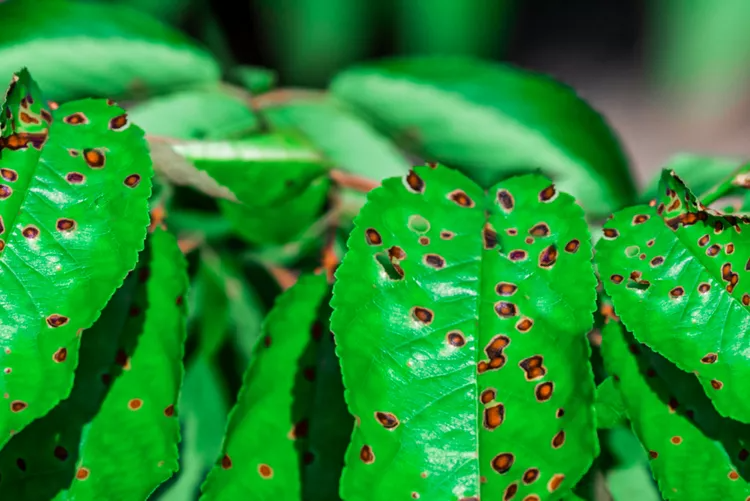Diagnosing Brown Spots on Rose Petals: Causes and Solutions
As a rose gardener, few sights are more distressing than discovering brown spots marring the beauty of your roses’ petals Unfortunately, several common rose diseases and pests can cause this unsightly symptom Properly identifying the underlying cause is crucial for saving your roses. This article will explore the most likely culprits behind brown spots on rose petals and provide solutions to treat the problem.
Botrytis BlightSoft, brown spots appearing on petals following cool, wet weather point to infection by the fungus Botrytis cinerea. This pathogen thrives in damp conditions and can spread rapidly during periods of rain, fog or heavy dews Besides mottled spots, botrytis blight symptoms include flower buds failing to open, a gray fuzzy mold on affected parts and canes weakening or dying back. The fungus can overwinter in dead rose debris and soil.
To treat botrytis blight, improve air circulation around plants through judicious pruning and spacing. Water early in the day so leaves can dry out. Remove and destroy any infected debris. Fungicidal sprays applied preventatively can help protect healthy tissue when weather favors the disease. Resistant rose varieties will suffer less damage if botrytis blight strikes.
Black Spot Disease
Another common fungal disease, black spot, produces small dark spots with fringed margins on leaves and occasionally petals. The spots enlarge and turn yellow as the disease progresses, eventually causing leaves to drop. Extended wet conditions allow the black spot fungus to proliferate and spread.
Prevent black spot by planting roses in full sun with ample spacing and air flow. Water at the base, avoiding wetting foliage. Apply mulch to prevent soil from splashing up. Remove diseased material promptly. Apply fungicides containing chlorothalonil, myclobutanil, propiconazole or copper as protection before fungus develops. Focus on disease resistance when selecting roses.
Rose Curculio Weevils
While not a disease, the feeding habits of rose curculio weevils can cause brown spots on rose buds and flowers. Active in spring, these small tan and brown weevils use their long snouts to drill into tightly closed buds to lay eggs. The messy holes and staining left behind as larvae feed inside developing blooms leads to blotchy, dried out spots. Heavy infestations can ruin entire flowering cycles.
Check for rose curculios when buds start distorting. Remove and destroy affected buds to eliminate eggs/larvae. Apply insecticidal soap weekly as buds form to deter adult weevils. Cultivate garden debris where pupae live. Timed applications of neem oil or spinosad also thwart these pests. Planting resistant rose varieties avoids curculio problems.
Thrips
Another pest, thrips, can leave behind brown blotches and scars on rose flowers and buds where they pierce and suck juices from plant cells. Their feeding makes petals appear dried out or burned. Thrips particularly target light colored blooms. You may see the tiny winged insects inside damaged buds.
Knock thrips off plants with a strong stream of water early on. Apply insecticidal soap regularly to suffocate thrips, and use spinosad or neem oil to disrupt their life cycle. Hang up blue sticky traps to monitor and reduce populations. Keep nearby weeds down and avoid planting roses thrips favor.
Two-Spotted Mites
Microscopic, sap-sucking two-spotted spider mites look like moving dots to the naked eye. Their feeding damages plant cells, causing a stippled bronze or yellow discoloration on leaves. Petals can also become speckled if mites move onto flowers. Webbing may be visible in high infestations. Hot, dry conditions favor mites.
Hose plants down forcefully to dislodge mites. Release predator mites to consume pest mites. Apply insecticidal soap, neem oil or horticultural oil weekly when mites are active. Keep plants healthy and avoid stressing them. Monitor closely and treat at first signs of mites before damage escalates.
Nutrient Deficiencies
Environmental factors can also cause brown spots on roses independent of pests or diseases. Nutrient deficiencies make roses more vulnerable to problems and may manifest as browned leaf tips, margins or blotches in severe cases. Insufficient nitrogen turns leaves pale green then yellow with brown edges. Deficient phosphorus causes purpling leaves. Spotted, browned leaves result from lack of potassium.
Confirm nutrient shortages with soil testing. Address deficiencies by applying a balanced rose fertilizer according to label directions to nourish your plants. Organic compost also provides a slow-release nutrient boost. Mulch to conserve moisture and minerals. pH imbalance or poor drainage can limit nutrient uptake and require correction.
Chemical Damage
Another non-organism issue, herbicide drift or exposure can injure rose tissues, leaving brown, dried out spots on leaves and flowers. Nearby weed control efforts may inadvertently send chemicals onto rose plants. Even diluted or dried residues on equipment used around roses can cause phytotoxicity.
Avoid applying weed killers near actively growing roses. Wash equipment thoroughly after chemical use. Provide protection from drifts by growing susceptible roses upwind or in greenhouses. Identify and mitigate the contamination source if symptoms appear. Damaged parts won’t heal but can be pruned out to save the plant.
By carefully observing where, when and which plant parts display symptoms, you can sleuth out what causes problematic brown spots on your roses’ pristine petals. Targeted solutions will then restore their unblemished beauty and maximize flowering performance. With vigilance and prompt action, you can keep these potential rose troubles at bay.
Prevent Black Spots On Rose Leaves In 3 Steps
FAQ
How do you treat brown spots on rose petals?
What to do when rose petals turn brown?
How do you get rid of rust spots on roses?
- A Complete Guide to Caring for Yuki Cherry Blossom Shrub - January 23, 2025
- Identifying Red Hot Poker Seeds: What to Look For When Harvesting Torch Lily Pods - January 23, 2025
- A Complete Guide to Harvesting Evening Primrose Seeds - January 23, 2025

